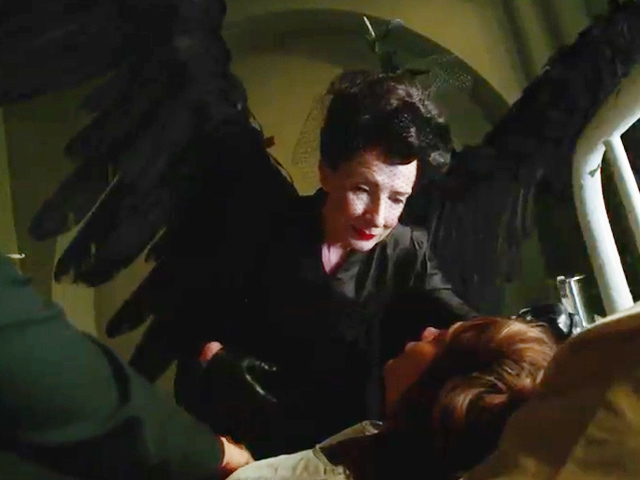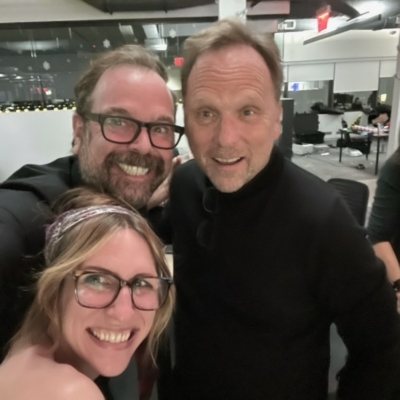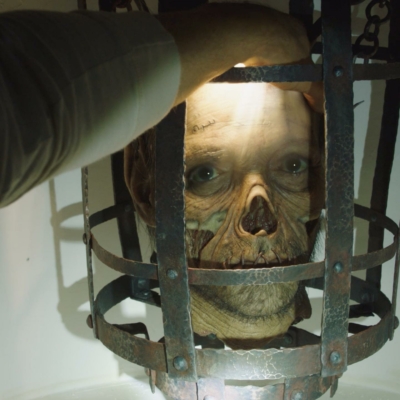FuseFX Sets The Bar High in Emmy-Nominated Work for “American Horror Story”

Burbank-based effects house’s freaky work for hit FX series continues to draw accolades.
BURBANK—August 21, 2015— American Horror Story is a major hit for FX. The most recent season of the anthology series, Freak Show, became the most-watched show in the network’s history. The show has won the loyalty of fans and kudos from critics for its smart, imaginative storytelling and superb performances from its stellar ensemble cast.
The show also features some of the best visual effects on television. Ranging from photo-real set extensions to CG characters to all manner of blood and gore, they are the work of Burbank-based FuseFX, whose team is currently nominated for an Emmy Award for Outstanding Special Visual Effects in a Supporting Role. Earlier this year, FuseFX won the VES Award for Outstanding Supporting Visual Effects in a Visual Effects Driven Photoreal/Live Action Broadcast Program.
FuseFX has overseen visual effects for American Horror Story since its premiere in 2011 and its role has grown with each season. “(Series creator) Ryan Murphy wants us to outdo ourselves every year,” says FuseFX VFX Supervisor Jason Piccioni. “In our first meeting for this season, he said the scope of the work would be something never before seen in a television series and he was right.”
The average 1-hour episode from the Freak Show anthology included more than 100 visual effects shots many of which were complicated character effects. There was Edward Mordrake, a 19th century English noble, who sports a second face on the back of his head, and Twisty, a macabre clown who lost his lower jaw to a shotgun blast. Most ambitious are Bette and Dot Tattler, conjoined twins, identical in every respect except for their divergent personalities. (Both characters are played by actress Sarah Paulson.)
FuseFX works closely with the production’s special effects and make-up departments in designing and executing those sorts of character effects. “We go over the script together and work out a plan to divide and conquer,” Piccioni explains. “The creative direction comes from Ryan Murphy. He is very clear on what he wants.” Piccioni notes that many of the members of the team worked together on a previous Ryan Murphy series, Nip/Tuck, and have developed a mutual “shorthand” that allows them to quickly assign tasks and set protocols.
Depending on the workload, FuseFX might assign 25 artists or more to an episode. Along with Piccioni, creative members of the team include Dave Altenau, Justin Ball, Jason Spratt, Tim Jacobsen, Tommy Tran, Mike Kirylo, and Matt Lefferts.
For this past season, effects production was typically limited to a week per episode. FuseFX would receive production media on a Friday night and have it ingested into its pipeline by Saturday morning. Artists would tackle scenes involving the conjoined twins first and deliver rough versions to the show’s editors by Sunday afternoon. On Wednesday, they would begin delivering shots for review to the producers. By Thursday, the work would be done.
“It’s a fast process,” Piccioni says. “To do the type of work that we’re doing for a feature, where you might have eight months, is one thing, but to do it on a television schedule is very challenging.
The nature of the effects in Freak Show required that FuseFX work in close collaboration with the show’s editors. “We were creating character elements that involved dialogue and expression and so we're very closely entwined with the editorial,” Piccioni explains. “There was a lot of back and forth with the editors, much more than in years past.”
The conjoined twins required particular finesse. Artists needed to marry separate elements of the characters’ heads and do so in a way that made them appear to be part of a single body whose skin and muscles functioned realistically. Piccioni notes that the twins shots would have been easier if camera movement was limited, but they resisted that option. “We didn’t want to compromise what was special about the show,” he says. “Instead of restricting how things were shot, we adapted our technique to the show’s aesthetic.”
The mandate to continually raise the bar creates certain pressures for the FuseFX team. “Some of the things we did this year were incredibly difficult to pull off,” Piccioni notes. “They were really great episodes and they challenged us to reach deep into our bag of tricks.”
View FuseFX’s work on American Horror Story: Freak Show here: https://vimeo.com/137194765.
�
�


